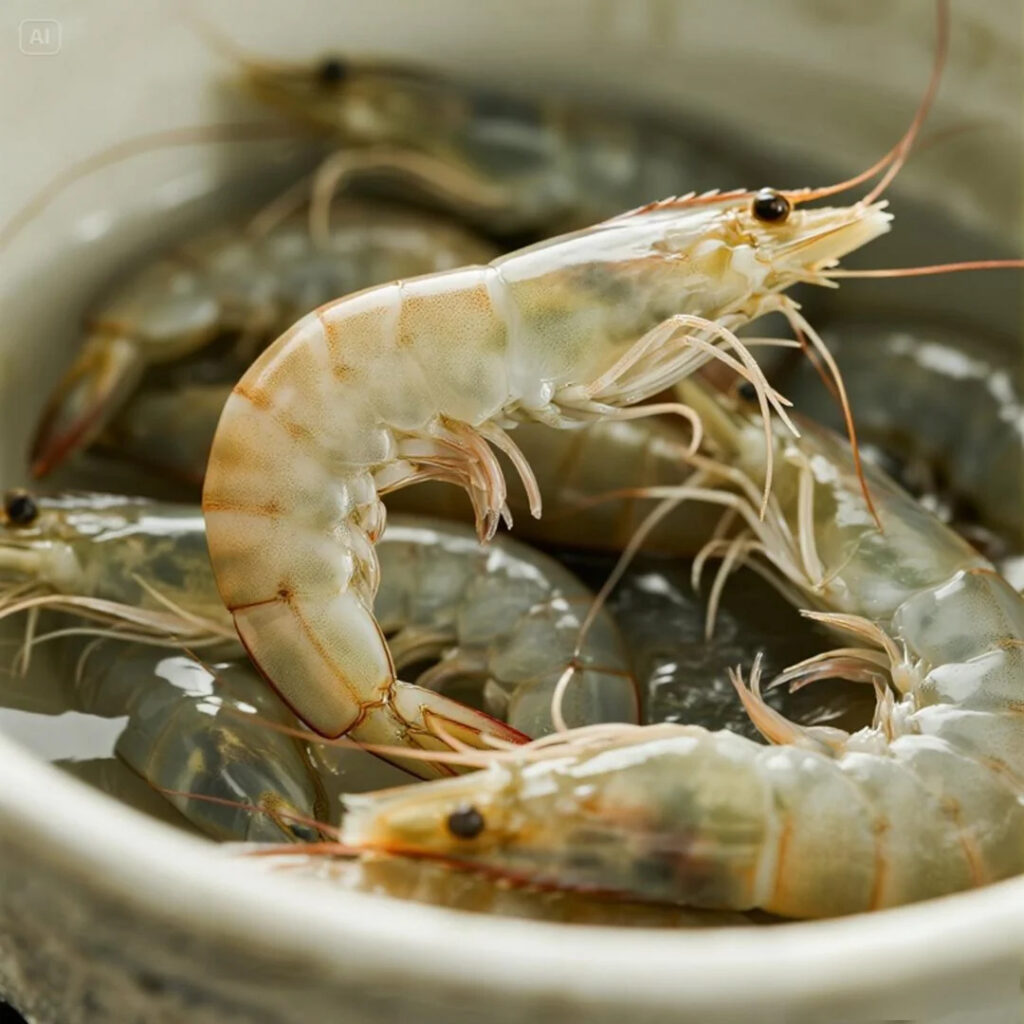Bile acids have shown significant potential in shrimp farming, offering multiple benefits that contribute to the health, growth, and overall performance of shrimp. Here’s a detailed look at their applications and advantages in shrimp farms:
1. Lipid digestion and utilization
- Emulsification: Similar to their role in other animals, bile acids act as emulsifiers in the shrimp’s digestive system. Shrimp diets often contain a certain amount of lipids, which are an important source of energy. Bile acids break down large lipid droplets into smaller ones, increasing the surface area available for the action of lipases. This enhanced emulsification process enables lipases to more effectively hydrolyze triglycerides into fatty acids and glycerol, facilitating their absorption across the intestinal epithelium of shrimp.
- Improved feed efficiency: By improving lipid digestion and absorption, bile acids help shrimp make better use of the dietary lipids. This leads to an increase in feed conversion efficiency, meaning that shrimp can convert feed into body weight more effectively. As a result, less feed is required to achieve the same growth rate, reducing feed costs for shrimp farmers.
2. Liver and hepatopancreas protection
- Detoxification support: The hepatopancreas is a vital organ in shrimp, responsible for functions such as digestion, nutrient storage, and detoxification. Bile acids can enhance the detoxification ability of the hepatopancreas. They help in the removal of toxins and waste products from the body, protecting the hepatopancreas cells from damage caused by environmental pollutants, such as heavy metals and pesticides, as well as from the by – products of normal metabolism.
- Maintenance of hepatopancreas health: Bile acids promote the normal physiological function of the hepatopancreas. They can regulate the synthesis and secretion of bile, which is essential for the proper digestion and absorption of nutrients. In addition, bile acids may have a role in maintaining the integrity of the hepatopancreas tissue structure, preventing the occurrence of hepatopancreas diseases, such as hepatopancreatic necrosis syndrome.
3. Immune system enhancement
- Antioxidant activity: Bile acids possess antioxidant properties. They can scavenge free radicals in the shrimp’s body, reducing oxidative stress. Oxidative stress can weaken the immune system of shrimp, making them more susceptible to diseases. By reducing oxidative stress, bile acids help maintain a healthy immune system, enabling shrimp to better resist infections caused by bacteria, viruses, and fungi.
- Modulation of immune – related genes: Bile acids can modulate the expression of immune – related genes in shrimp. They may up – regulate the production of immune factors, such as antimicrobial peptides and cytokines, enhancing the overall immune response of shrimp. This is particularly important in intensive shrimp farming systems, where shrimp are often exposed to high stocking densities and environmental stressors, increasing their risk of disease.
4. Growth promotion
- Increased nutrient absorption: In addition to improving lipid digestion, bile acids also have a positive impact on the absorption of other nutrients, such as proteins and carbohydrates. By enhancing the overall digestive function of shrimp, more nutrients are available for growth and development. This leads to faster growth rates, larger body sizes, and improved survival rates of shrimp.
- Enhanced molting process: Molting is a crucial process in the growth of shrimp. Bile acids can influence the molting process by providing the necessary energy and nutrients. They help in the synthesis of new exoskeletons and the regulation of hormonal balance during molting. This results in more successful molts, reducing the risk of molting – related mortality and promoting continuous growth.
5. Application in shrimp feed
- Dosage: The appropriate dosage of bile acids in shrimp feed depends on various factors, such as the age and size of the shrimp, the diet composition, and the water quality of the shrimp farm. Generally, the addition level ranges from 200 – 500 grams per ton of feed. However, it is recommended to follow the specific instructions provided by the bile acid product manufacturer or consult a shrimp nutrition expert.
- Formulation: Bile acids can be incorporated into shrimp feed during the feed – manufacturing process. They can be added in powder or liquid form, depending on the feed production technology and the compatibility with other feed ingredients. It is important to ensure uniform mixing of bile acids in the feed to ensure that all shrimp receive the appropriate amount.

